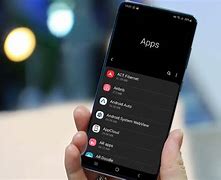Android permissions used to be a jumble, but modern versions of Android have greatly simplified them. You can now grant apps access to specific features as needed. You can also revoke permissions from any app manually.
You no longer need to root, install a custom ROM, or switch to an iPhone to accomplish this. Android now has the app permission system that it should have had all along, similar to the system on the iPhone (though still room for improvement).
How Android’s Permission System Works
When Android apps require permission, they will ask for it. For example, rather than granting an app access to your camera when you install it, you will be prompted the first time the app requests access to your camera. You can also control when it receives that permission.
You can also manage any app’s permissions manually at any time, even if it was designed for an older version of Android and doesn’t normally ask for them.
How to Manage the Permissions of a Single App
To get started, open the Settings app. Swipe down once or twice from the top of the screen, depending on your phone, and tap the gear icon.
Now, in the Settings menu, navigate to the “Apps” section.
You’ll see a list of all the apps that are currently installed on your Android device (you may need to expand the list to see them all). To view more information, select one of the apps from the list.
On the App Info page, navigate to the “Permissions” section.
You’ll see a list of all the permissions that the app can use. The permissions you’ve “Allowed” are at the top, while the permissions you’ve “Not Allowed” are at the bottom. To change permission, simply tap it.
Some permissions have only binary “Allow” or “Don’t Allow” options, whereas others, such as Location and Camera, have more options.
An “Unused Apps” section is located at the very bottom of the permissions list. This is where you can toggle the “Remove Permissions and Free Up Space” switch. If you do not use the app for an extended period, the permissions will be revoked.
Viewing and Managing All App Permissions
Go to the “Privacy” section of the Settings and select “Permission Manager” to view and manage all app permissions at once.
You’ll see a list of different permission categories, as well as the number of apps installed that have access to that permission. Body Sensors, Calendar, Call Logs, Camera, Contacts, Files and Media, Location, Microphone, and other categories are available.
Choose permission to see which apps have access to it. Select the app and turn it off if you want to revoke its access to that permission.
If the app was designed for a previous version of Android, you’ll see a warning message, just as you did when managing an individual app’s permissions above. Unless you revoke a permission that is critical to any functionality, most apps should continue to function normally.
As is customary with Android, some of these steps may not work on all devices. We carried out this procedure on a Google Pixel phone running Android 12. Android device manufacturers frequently change the interface, and some options may be located in different locations. Make use of alternative methods to ensure your security and privacy.

